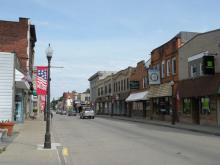A Pilot Project in Pittsburgh Solves the Problem of Low-Income Internet Access Programs
We’ve written a lot over the last half year about communities around the country that have built fixed wireless networks to bridge the digital divide. Most recently, we’ve seen approaches which look to tackle particular inequalities that fast, affordable Internet access can help to alleviate: in Providence, Rhode Island, for instance, nonprofit One Neighborhood Builders built a network to tackle health disparities among Olneyville residents.
Today we’re covering a project in Pittsburgh that confronts another aspect of the digital divide laid bare by the pandemic: communities where connectivity options exist and low-income programs like Comcast’s Internet Essentials are available, but the minimum speeds offered are insufficient for households where multiple users need to work and attend school simultaneously. In a world where upload speed remains just as important as download speed, asymmetrical 25/3Mbps (Megabits per second) connections don’t cut it anymore.



